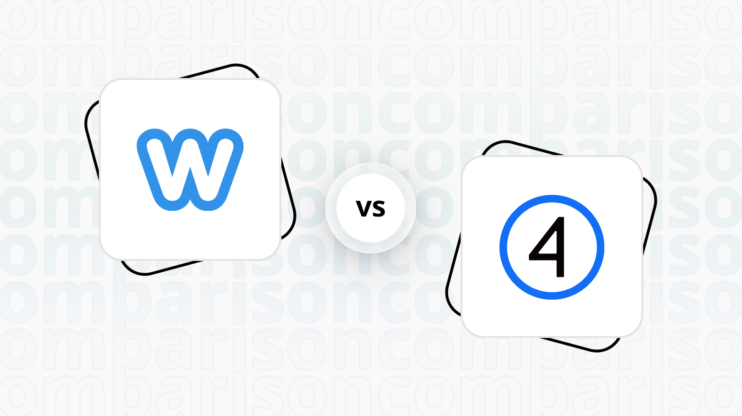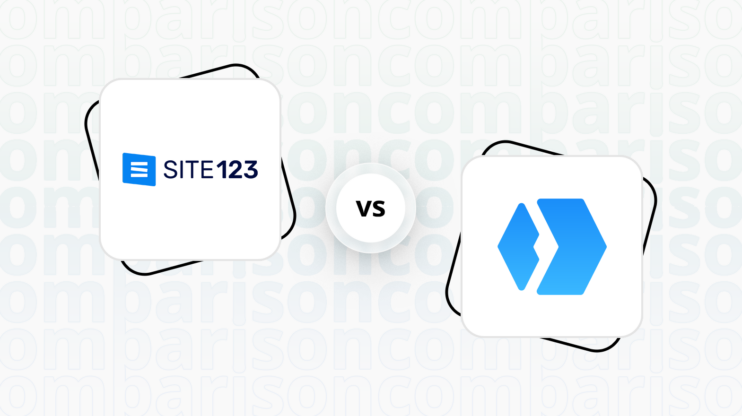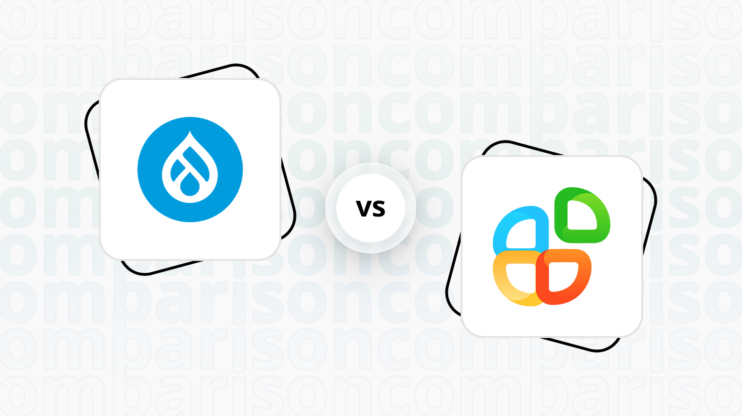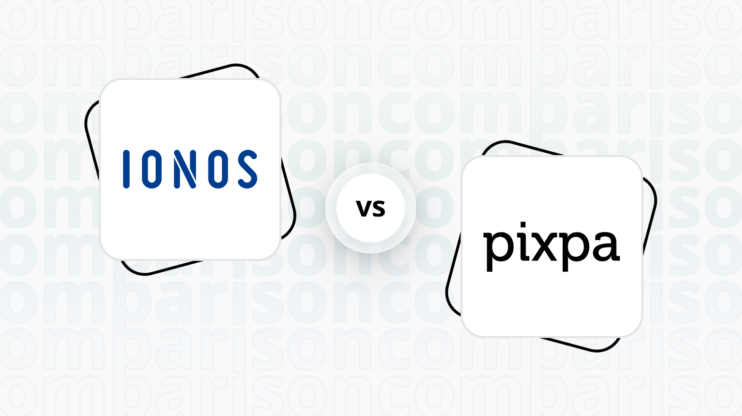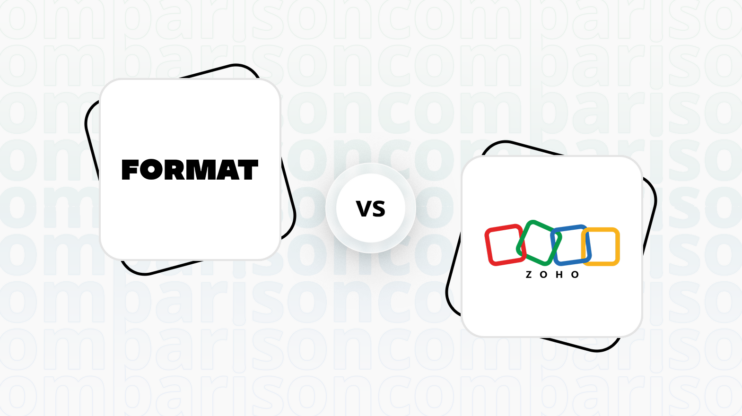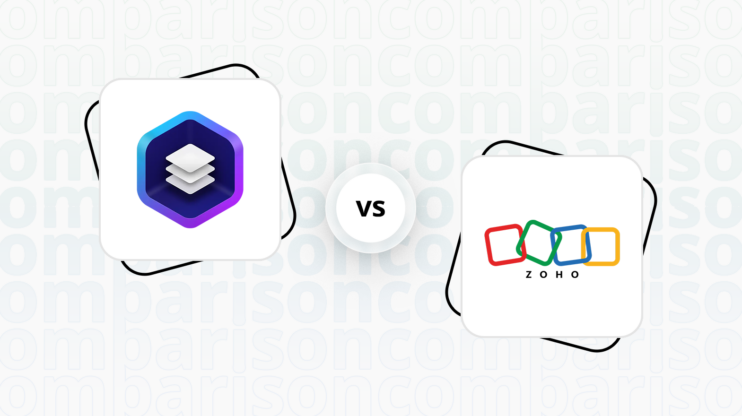Final verdict
Squarespace and Showit both offer unique strengths, catering to different user needs and preferences.
-
Squarespace (Overall Grade: 7.9/10)
is a versatile website builder that excels in providing a user-friendly experience with a wide range of templates and robust ecommerce features. It is ideal for users seeking an all-in-one solution for creating professional websites without the need for coding. Squarespace’s strong customer support, comprehensive learning resources, and advanced marketing tools make it a reliable choice for businesses and individuals looking to establish a strong online presence. -
Showit (Overall Grade: 6.4/10)
is tailored for creative professionals who prioritize design flexibility and customization. Its drag-and-drop interface and dual canvas feature allow for highly personalized website designs, making it a favorite among photographers, designers, and bloggers. While Showit may lack some of the advanced ecommerce functionalities of Squarespace, its seamless integration with WordPress for blogging and unique design capabilities make it a compelling option for users focused on aesthetics and creative control.

|

|
|
|---|---|---|
|
Design functionalities & templates |
8.0 |
8.5 |
|
Ease of use |
8.3 |
8.6 |
|
Ecommerce |
8.2 |
4.8 |
|
Website Editors |
8.3 |
8.0 |
|
Product testing options |
7.4 |
8.3 |
|
Price |
8.4 |
7.9 |
|
Hosting quality |
7.6 |
7.3 |
|
Website speed optimization |
6.7 |
5.4 |
|
Plugins and integrations |
6.8 |
5.8 |
|
Marketing features |
8.1 |
7.2 |
|
Customer support |
7.8 |
6.4 |
|
Security |
8.8 |
8.3 |
|
AI capabilities |
7.5 |
0 |
|
User Management |
7.4 |
6.7 |
Best for ecommerce
 8.2
8.2
 4.8
4.8
Verdict
: Squarespace is a more robust choice for ecommerce, offering comprehensive features and ease of use, while Showit is better suited for creative professionals needing basic ecommerce capabilities.
-
Squarespace
: Squarespace excels in providing a complete ecommerce solution with secure payment processing, built-in marketing tools, and SEO optimization. It offers around 50 ecommerce templates and flexible product page customization options. Squarespace is ideal for businesses of all sizes looking for a hassle-free setup and powerful ecommerce features. -
Showit
: Showit focuses on design flexibility and integrates with platforms like Shopify and WooCommerce for ecommerce functionalities. It lacks the comprehensive ecommerce features of Squarespace but is a good option for creative professionals who prioritize design and need basic ecommerce capabilities.
Best for informational & business websites
 8.4
8.4
 8.7
8.7
Verdict
: When it comes to creating informational and business websites, Showit slightly edges out Squarespace due to its higher degree of customization and creative freedom. However, both platforms are strong contenders, each with unique advantages.
-
Squarespace
: Squarespace is a robust website builder that offers a user-friendly experience with a variety of professional templates. It is particularly well-suited for users who want a hassle-free website creation process. Squarespace’s comprehensive learning resources and strong customer support make it an excellent choice for those who need guidance and assistance. With a score of 8.4, Squarespace is a powerful option for creating polished and professional informational websites. -
Showit
: Showit is designed for creative professionals who seek a high level of customization and control over their website’s appearance. Its drag-and-drop interface and dual canvas feature allow for independent design of mobile and desktop views, making it ideal for visually driven websites. Showit’s integration with WordPress for blogging adds to its appeal, providing a seamless experience for content management. Scoring 8.7, Showit is the preferred choice for those who prioritize creative freedom and unique design in their informational and business websites.
Detailed comparison
Design functionalities & templates
Design FunctionalitiesRepresents how well each platform allows for creative design and customization of websites.Score Components:
- Template Variety (30%): Range and quality of design templates.
- Customization (30%): Flexibility and options for design alterations.
- User Interface (20%): Ease and intuitiveness of the design process.
- Responsiveness (10%): Adaptability to different devices and screen sizes.
- Innovation (10%): Unique design features and tools.
 8.0
8.0
 8.5
8.5
🏆
Winner: Showit.
Showit offers a wider range of creative features and customization flexibility, making it the preferred choice for those seeking a unique and personalized website design.
Squarespace boasts an impressive variety of website templates, offering over 120 pre-designed options to choose from. These templates cater to a wide range of needs and industries, from creative portfolios and sleek online stores to professional business websites and personal blogs.


On the other hand, Showit offers a wide variety of templates and designs, catering to diverse aesthetic preferences and business needs. Users can choose from an extensive collection that ranges from minimalist and sleek to bold and artistic, ensuring there’s something for every brand identity. The platform is known for its flexibility and user-friendly interface, allowing for easy customization of templates.


Get a head start on website creation with AI
Create a custom website tailored to your business needs 10X faster with 10Web AI Website Builder!
Ease of use
Ease of useReflects the platform’s overall user-friendliness.Score
Components:
- Learning curve (40%): Quickness and ease of getting started.
- Interface design (30%): Simplicity and intuitiveness of layout.
- User guidance (20%): Quality of tutorials and support.
- Flexibility (10%): Adaptability to various user skills.
 8.3
8.3
 8.6
8.6
🏆 Winner: Showit
. With a score of 8.6, Showit edges out Squarespace (8.3) in terms of ease of use. Showit’s user-friendly drag-and-drop interface and high degree of creative freedom make it a favorite among creative professionals. However, Squarespace is also a strong contender with its straightforward navigation and real-time preview.
Learning Resources
🏆 Winner: Squarespace
. Both platforms offer solid learning resources, but Squarespace goes a step further with its comprehensive Help Center, clear video tutorials, live webinars, an informative blog, and an active community forum. Showit also offers a range of learning resources, including a comprehensive training course and a more informal learning hub with videos.
For ecommerce
EcommerceMeasures the platform’s effectiveness in supporting online business activities.Score Components:
- Ecommerce themes and templates (20%): Variety and design of templates.
- Product management (25%): Ease of managing and organizing products.
- Payment options (25%): Variety and convenience of payment methods.
- Ecommerce features (20%): Features for managing an ecommerce store.
- Integration (10%): Compatibility with external e-commerce tools and services.
 8.2
8.2
 4.8
4.8
Squarespace is a comprehensive ecommerce solution, offering a range of features from secure payment processing to SEO optimization. It’s designed to simplify the process of setting up an online store, making it a good choice for businesses of all sizes. On the other hand, Showit is primarily a design-focused website builder. It offers basic ecommerce functions and allows integration with Shopify and WooCommerce for enhanced ecommerce capabilities. However, it lacks the comprehensive ecommerce features found in platforms like Squarespace.

|

|
|
|---|---|---|
|
Ecommerce themes and templates |
7.5 |
2.0 |
|
Product page customization |
7.0 |
2.5 |
|
Payment processing and commissions |
7.8 |
4.0 |
|
POS capabilities |
6.5 |
1.0 |
|
Payment gateways |
7.5 |
4.5 |
|
Product numbers |
6.8 |
3.0 |
|
Additional ecommerce features |
7.2 |
3.5 |
Squarespace ecommerce features:
- Intuitive interface
- Secure payment processing
- Built-in marketing tools
- SEO optimization
- Website analytics
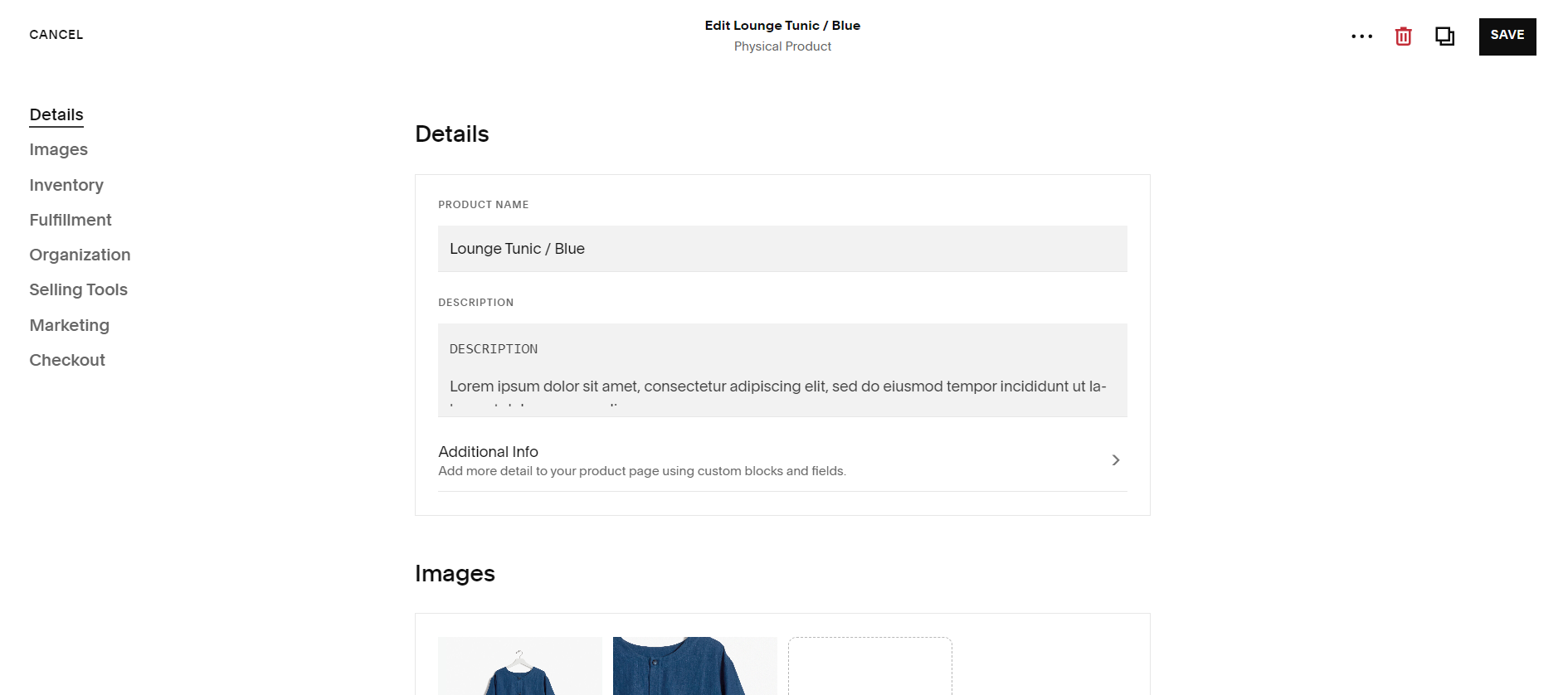
Showit ecommerce features:
- Shopify and WooCommerce integration
Ecommerce themes & templates
Squarespace provides a diverse selection of around 50 ecommerce templates, catering to various industries like fashion, beauty, home goods, and technology. These templates range from clean and minimalist to bold and colorful, accommodating different brand aesthetics and product types. Showit, on the other hand, does not have any ecommerce specific templates.
Product page customization
Customizing Squarespace product pages offers options for layout, design, and interactive elements. Choose templates, customize colors, fonts, and content. Enhance engagement with features like customizable buttons, wishlists, comparisons, reviews, and related products. Advanced options include custom code injection and third-party app integrations. Showit has very basic ecommerce capabilities, primarily through its integration with WooCommerce and Shopify.
Payment processing
Squarespace provides flexible payment processing for online stores with integrated gateways like Stripe and PayPal. External gateways can be set up for specific needs. Transaction fees may apply depending on the plan and payment method. Security measures include PCI compliance and fraud prevention. Additional features include payment links, support for subscriptions, and the ability to accept international payments in various currencies. Showit supports e-commerce by allowing integration with third-party platforms like Shopify Lite, ThriveCart, WooCommerce, and Podia, rather than offering direct payment processing or POS capabilities. Users can add e-commerce functionalities to their Showit sites using embed codes for “Buy Buttons” or similar features from these platforms. The choice of platform depends on the user’s specific needs, including product type, store size, and budget, as each platform has its own pricing and transaction fee structures. Additionally the platform supports integration of PayPal pay button, allowing users to pay directly through their PayPal account.
Website Editors
Website EditorsEvaluates the platforms’ website building and editing capabilities.Score Components:
- Customization tools (40%): Range and power of editing features.
- Editor usability (30%): User experience within the editor.
- Design flexibility (20%): Freedom in layout and design changes.
- Update and maintenance ease (10%): Simplicity of updating and maintaining the site.
 8.3
8.3
 8.0
8.0
🏆
Winner: Squarespace
. Squarespace, with a score of 8.3, offers a user-friendly editor that allows easy drag-and-drop website creation without coding. With visually appealing templates and customization options, it caters to beginners and pros alike. The real-time editing experience ensures instant previews. Prioritizing content, it’s mobile-responsive and offers functional features like forms, social media integration, and online stores. Squarespace seamlessly integrates with tools for extended capabilities.
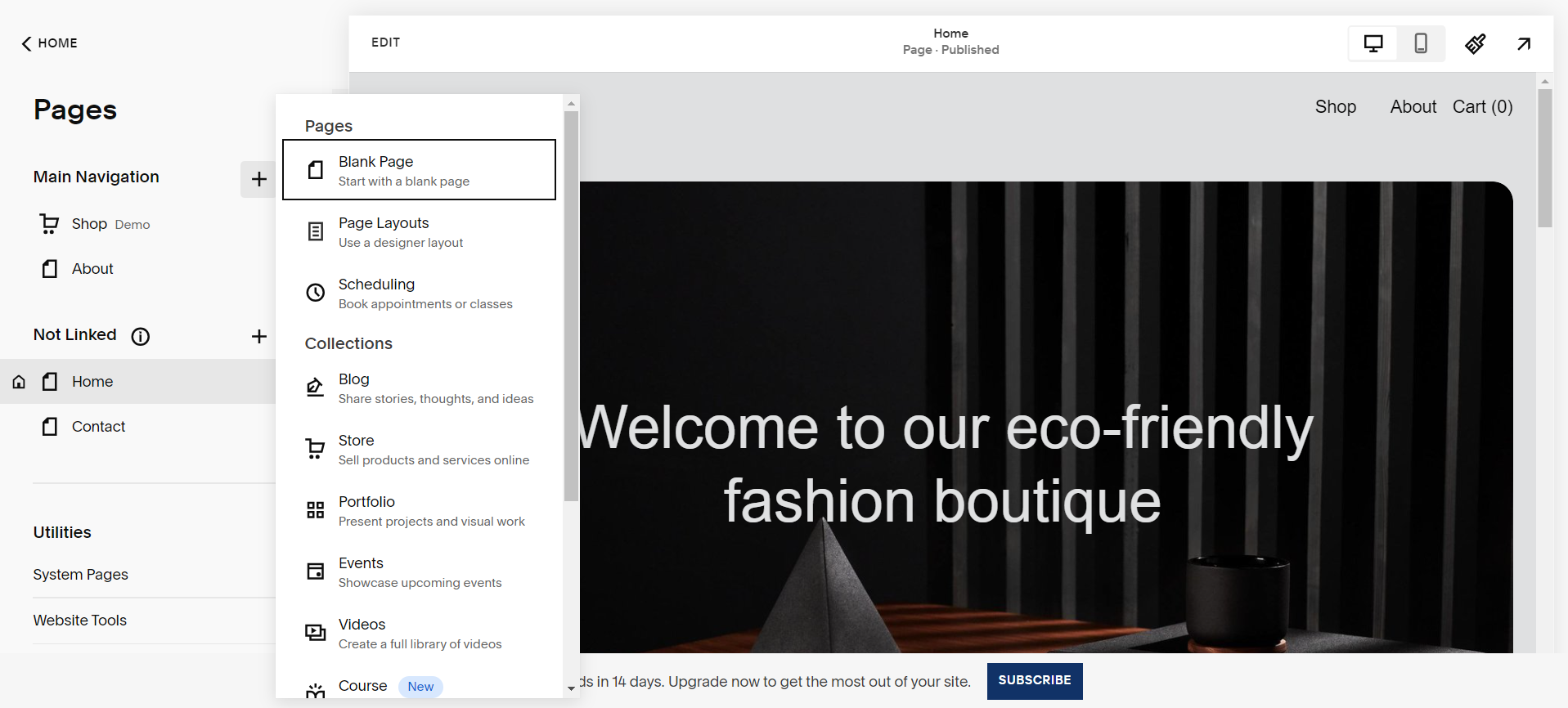
Showit’s editor, scoring 8.0, is designed for creating custom, responsive websites with a focus on ease of use, especially for photographers and creative professionals. It allows users to design their website visually with a drag-and-drop interface, eliminating the need for coding knowledge. Users can create highly customized pages by adjusting layouts, fonts, and colors, and can also incorporate multimedia elements like videos and images directly into their designs. Additionally, Showit offers deep integration with WordPress for blogging, enabling users to manage and publish blog posts within the same platform, providing a seamless experience from website design to content management.
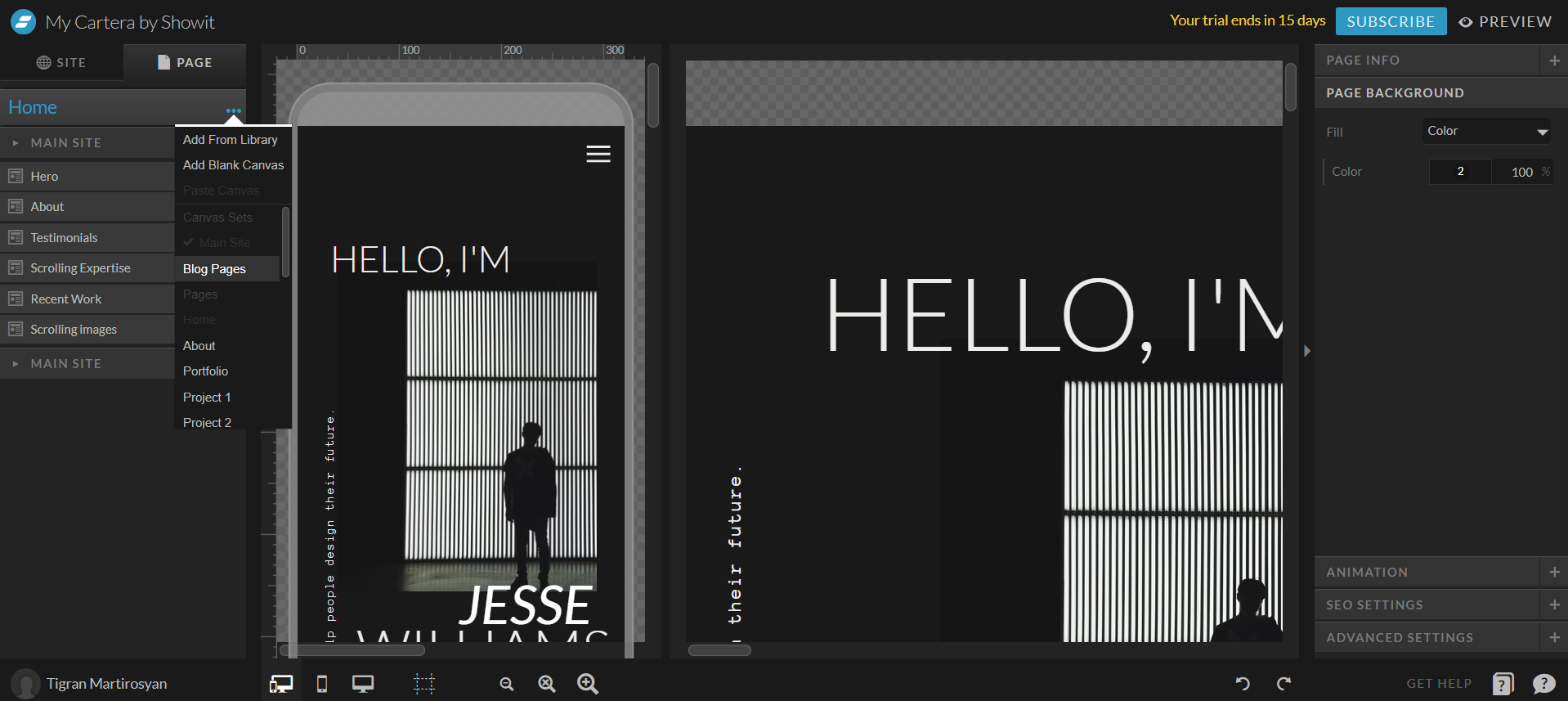
Mobile editor/app
 8.5
8.5
 0
0
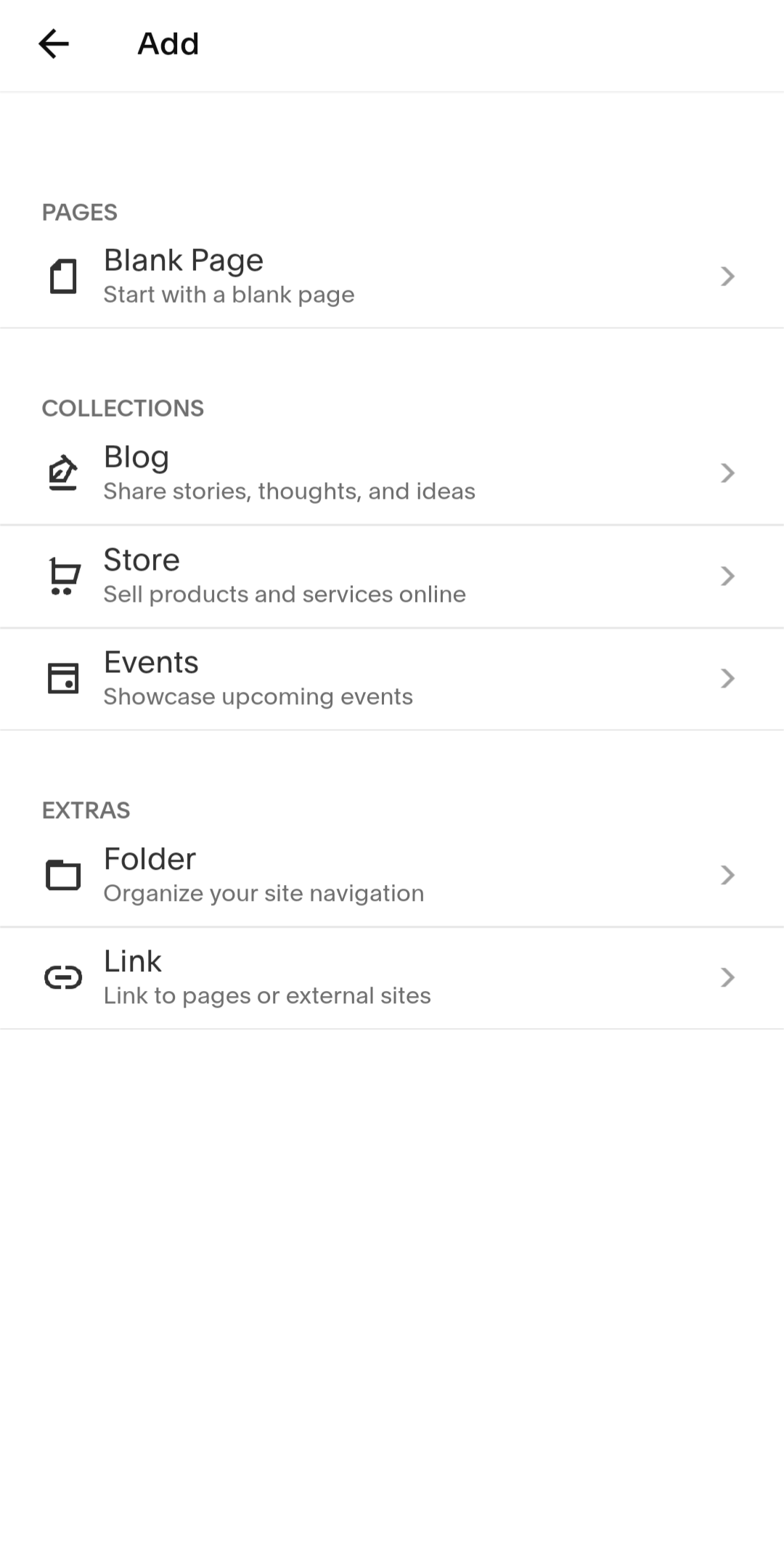
🏆
Winner: Squarespace
. Squarespace offers a mobile app that allows users to manage their website on the go. The app enables content editing, website analytics, online store management, and social media scheduling. However, it’s worth noting that complex tasks such as advanced design customization or creating new page layouts require access to the desktop editor, as the app doesn’t offer the full range of functionalities available on desktop.
Showit, on the other hand, does not have a dedicated mobile editor app, and it’s not possible to edit a Showit website using a mobile browser version. Therefore, Squarespace is the clear winner in this category due to its mobile editing capabilities.
Product testing options
Product Testing OptionsAssesses the options for trying out platform features before commitment.Score Components:
- Trial quality (40%): Extent and usefulness of the trial or free version.
- Feature accessibility (30%): How many features are available to test.
- Trial duration (20%): Length of the trial period.
- Ease of transition (10%): Smoothness of moving from trial to paid plans.
 7.4
7.4
 8.3
8.3
Overall Result
:
Showit Wins
. Showit scores 8.3, slightly higher than Squarespace’s 7.4. Both platforms offer a 14-day free trial, but Showit stands out by allowing users to test all premium features during the trial period. Additionally, Showit offers a longer money-back guarantee period of 30 days compared to Squarespace’s 14 days.

|

|
|
|---|---|---|
|
Free Plan |
No | No |
|
Trial Duration |
14 days | 14 days |
|
Testing Premium Features |
Limited |
All features during free trial |
|
Money Back Guarantee |
14 days |
30 days |
Price
PriceLooks at the cost-effectiveness and value for money of each platform.Score Components:
- Plan value (40%): What each pricing tier offers.
- Transparency and clarity (30%): Clearness of pricing structures.
- Flexibility of plans (20%): Range of options to suit different budgets.
- Hidden costs (10%): Additional expenses not included in the plan.
 8.4
8.4
 7.9
7.9
Squarespace and Showit offer a range of pricing options, with Squarespace generally being more affordable. However, Showit’s pricing includes unique features like the dual canvas interface and WordPress integration, which may justify the higher cost for some users.

|

|
|
|---|---|---|
|
$10-$15 |
Personal ($12/month): Build a basic website with limited features for personal use. Access to basic templates, mobile-friendly design, and some social media integrations. Value for price: 6.0 |
No offering at this amount. |
|
$15-$20 |
Business ($16/month): Upgrade features with custom domain, SEO tools, marketing tools like email campaigns, and analytics. Value for price: 7.5 |
No offering at this amount. |
|
$20-$27 |
Commerce ($26/month): Perfect for online stores with built-in eCommerce functionality (unlimited products), secure checkout, inventory management, and marketing tools. Value for price: 8.5 |
Showit ($24/month): Ideal for sites without a blog. Includes 20GB storage and secure certificate. Regular design backups stored for 7 days. Value for price: 6.0 |
|
$27-$30 |
No offering at this amount. |
Showit + Basic Starter Blog ($29/month): For new blogs. Includes everything in the Showit plan, plus blog-specific features. 20GB storage, up to 10k monthly visitors, daily backups stored for 30 days, pre-installed plugins (no additional plugins are permitted), 1 WordPress user. Value for price: 7.0 |
|
$30-$50 |
Advanced Commerce ($40/month): Cater to high-volume stores with advanced eCommerce features like abandoned cart recovery, product subscriptions, gift cards, and real-time shipping quotes. Value for price: 9.0 |
Showit + Advanced Blog ($39/month): For migrating or high-traffic blogs with custom plugin needs. Includes everything in the Basic Starter Blog plan, plus up to 25k monthly visits, unlimited number of plugins, unlimited number of WordPress users, Free advanced blog migration from WordPress or Squarespace and FTP access. Value for price: 8.0 |
|
$60-$70 |
No offering at this amount. |
Showit + Advanced Blog 50k ($69/month): Includes everything in the Showit + Advanced Blog plan, with possibility to install custom WordPress plugins, 30 GB storage, up to 50k visitors monthly, and possibility to migrate Squarespace and WordPress blog posts. Value for price: 8.5 |
|
$100+ |
No offering at this amount. |
Showit + Advanced Blog 100k ($129/month): Includes everything in the Showit + Advanced Blog plan, with possibility to install custom WordPress plugins, 50 GB storage, up to 100k visitors monthly, and possibility to migrate Squarespace and WordPress blog posts. Value for Price: 9.0 |
location. As a result in rare cases the prices displayed here can differ from the ones you see on their
websites.
Hosting quality
Hosting
qualityExamines the reliability and performance of the hosting solutions.Score Components:
- Uptime (40%): Consistency and reliability of website availability.
- Speed (30%): Loading times and performance.
- Bandwidth and storage (20%): Sufficiency of resources provided.
- Data centers (10%): Quality and distribution of hosting infrastructure.
 7.6
7.6
 7.3
7.3
🏆
Winner: Squarespace
Squarespace and Showit both offer reliable hosting services with a 99.9% uptime guarantee. However, Squarespace edges out Showit due to its proprietary cloud-based hosting and strategically scattered data centers across North America, Europe, and Asia. Showit, while offering managed WordPress hosting, does not disclose any information about its data centers.

|

|
|
|---|---|---|
|
Do they offer hosting? |
Yes, included in all of their plans |
Yes, Managed wordpress hosting, with daily backups and 20GB storage |
|
Data Centers: |
Squarespace’s data centers are strategically scattered across North America, Europe, and Asia |
Showit does not disclose any information about its data centers |
|
Type of hosting: |
Proprietary cloud-based hosting |
Managed WordPress hosting |
|
Uptime: |
99.9% |
99.9% |
|
Uptime Guarantee: |
Yes |
Yes, 99% |
Website Speed Optimization
Website Speed OptimizationEvaluates optimization of website loading timesScore Components:
- PageSpeed Score (30%): Google’s score indicating performance optimization.
- Loading Time (30%): The average time until a website is fully interactive.
- Mobile Optimization (15%): Optimization effectiveness for mobile devices.
- Resource Optimization (15%): Optimizing images, scripts, and other heavy resources.
- CDN Usage (10%): Use of CDN to enhance speed across geolocations.
 6.7
6.7
 5.4
5.4
🏆 Winner: Squarespace
Both Squarespace and Showit have strategies for website speed optimization, but Squarespace provides more specific data and has a clear emphasis on Core Web Vital improvements.

|

|
|
|---|---|---|
|
Focus |
Responsive design, image optimization |
Optimization plugins, Caching |
|
Performance Tools |
CDN, code minification, lazy loading |
Not specified |
|
Key Strategies |
Responsive design, image optimization, CDN, code minification, lazy loading |
Optimization plugins, Caching |
|
Load Times |
0.7s to 9.1 s (Average: 2.9s) |
Varies depending on optimization and website complexity |
|
Page Speed Scores Range |
20/100 to 93/100 (Average: 62.7/100) |
Not specified |
|
Core Web Vitals Improvement |
Emphasis on LCP, FID, CLS improvements |
Not disclosed |
Squarespace’s approach to enhancing site speed includes responsive design, image optimization, use of a content delivery network (CDN), code minification, and lazy loading of images. Analysis of Squarespace websites showed a range of page speed scores from 20/100 to 93/100, averaging 62.7/100, with load times ranging from 0.7 seconds to 9.1 seconds, with an average of 2.9 seconds. Squarespace also places a strong emphasis on improving Core Web Vitals (CWV), specifically Largest Contentful Paint (LCP), First Input Delay (FID), and Cumulative Layout Shift (CLS).
Showit, on the other hand, does not provide specific data on load times or PageSpeed scores, stating that these vary depending on optimization and website complexity. Their key strategies for speed optimization include the use of optimization plugins and caching. However, Showit does not disclose any information on their Core Web Vitals improvements.
Get a head start on website creation with AI
Create a custom website tailored to your business needs 10X faster with 10Web AI Website Builder!
Plugins and integrations
Plugins and integrationsMeasures the range and effectiveness of additional plugins and integrations.Score Components:
- Variety of options (40%): Range of available add-ons.
- Integration smoothness (30%): Ease of integrating plugins into the site.
- Quality of plugins (20%): Functionality and reliability of the options.
- Custom integration capabilities (10%): Support for custom or third-party integrations.
 6.8
6.8
 5.8
5.8
🏆 Winner: Squarespace.
With a score of 6.8, Squarespace offers better plugins and integrations than Showit, which scores 5.8. Squarespace supports integrations and extensions through custom code injection and third-party tools, offering seamless functionality. Showit, on the other hand, offers plugins primarily for users with the Advanced Blog plan. Squarespace’s top integrations cover email marketing, SEO optimization, user behavior analytics, and varied payment options, while Showit integrates with platforms like Powr.io to enhance website functionality.
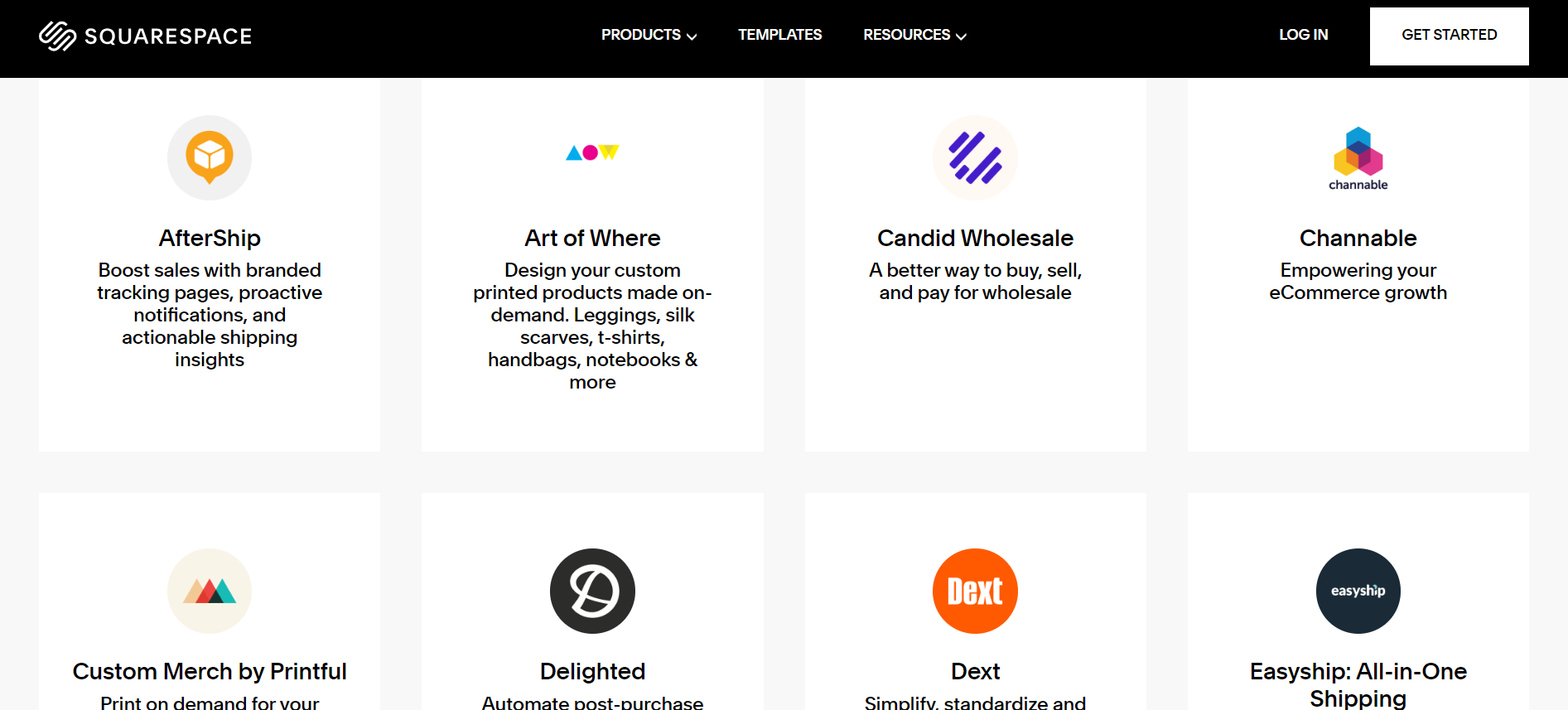
Marketing Features
Design FunctionalitiesRepresents how well each platform allows for creative design and customization of websites.Score Components:
- Template Variety (30%): Range and quality of design templates.
- Customization (30%): Flexibility and options for design alterations.
- User Interface (20%): Ease and intuitiveness of the design process.
- Responsiveness (10%): Adaptability to different devices and screen sizes.
- Innovation (10%): Unique design features and tools.
 8.1
8.1
 7.2
7.2
🏆
Overall Winner: Squarespace
. Squarespace stands out for its built-in email marketing and detailed analytics. Showit, on the other hand, relies heavily on third-party integrations for email marketing and analytics.

|

|
|
|---|---|---|
|
SEO Tools |
|
|
|
Email Marketing |
|
Yes, through third-party integrations |
|
Blogging |
|
|
|
Social Media Integration |
Direct linking and selling on social platforms, plus feed displays on-site |
|
|
Analytics and Reporting |
Detailed insights into website performance and visitor behavior |
Yes, through integration of Google Analytics |
|
Ads and Promotions |
Integration with Google Ads and tools for managing sophisticated ad campaigns |
Yes, through third-party integrations |
Customer Support
Customer supportEvaluates the quality and availability of support options.Score Components:
- Response time (40%): Speed of support responses.
- Support quality (30%): Effectiveness and helpfulness of the support.
- Availability (20%): Range of support channels (phone, chat, email).
- Resource richness (10%): Quality of self-help and educational materials.
 7.8
7.8
 6.4
6.4
🏆 Winner: Squarespace
. Comparing Squarespace vs Showit, Squarespace takes the lead in this category with a customer support score of 7.8. Squarespace offers a variety of support options, including live chat, email, a community forum, and a comprehensive help center. Live chat and phone support are available on weekdays, while email support is accessible 24/7. The community forum and help center provide round-the-clock access, ensuring users can find help whenever they need it.
Showit, with a customer support score of 6.4, provides support via email and chat during business hours from Monday to Friday, with limited support on weekends. While Showit typically responds within 1-2 hours during business hours, it lacks the 24/7 support availability that Squarespace offers. Despite this, Showit is appreciated for its quick response times and personalized assistance during its support hours.
Security
SecurityLooks at the platforms’ security measures and data protection.Score Components:
- Data protection (40%): Safeguards for user and customer data.
- SSL and encryption (30%): Implementation of secure connections.
- Compliance (20%): Adherence to industry security standards.
- Regular updates (10%): Frequency of security updates and patches.
 8.8
8.8
 8.3
8.3
🏆
Winner: Squarespace
. Squarespace’s security measures are comprehensive, including secure server storage, encryption, strict access controls, and compliance with regulations such as GDPR and CCPA. It also has vulnerability scanning and malware detection. These measures collectively safeguard your website content and customer information. Squarespace also prioritizes website security through built-in features, including secure hosting, SSL certificates, vulnerability scanning, malware and spam filters, two-factor authentication, data encryption, and compliance with security regulations like PCI-DSS and GDPR.
Showit also prioritizes user data privacy and security, adhering to GDPR guidelines and using Amazon’s S3 for secure and redundant data storage. It also automatically backs up design work and blog content. For website security, Showit provides robust security features for all hosted websites, including free SSL certificates for secure HTTPS connections and automated backups. It also has additional protections for WordPress-integrated sites, such as firewall protection, disc write protection, and automatic updates for WordPress Core, PHP, and MySQL. However, it falls slightly short compared to Squarespace’s extensive security measures.
AI Capabilities
AI capabilitiesMeasures the effectiveness of AI-driven features and tools.Score Components:
- Automation efficiency (40%): Impact of AI on streamlining processes.
- Personalization (30%): AI-driven customization for users or customers.
- AI-Assisted design (20%): Role of AI in website design and functionality.
- Data analysis (10%): Use of AI in interpreting user data and analytics.
 7.5
7.5
 0
0

|

|
|
|---|---|---|
|
Personalized Design |
|
|
|
SEO Optimization |
AI-driven recommendations for better search engine visibility |
|
|
Customer Behavior Analysis |
Advanced analytics to understand customer preferences |
|
|
Sales Predictions |
|
|
|
Inventory Management |
AI tools to assist in efficient inventory handling |
|
|
Content Generation |
AI assistance in creating diverse content |
|
🏆 Winner: Squarespace
. Squarespace, with a score of 7.5, utilizes AI to enhance the website creation and eCommerce experience. Its AI features focus on SEO optimization, customer behavior analysis, inventory management, and content generation.
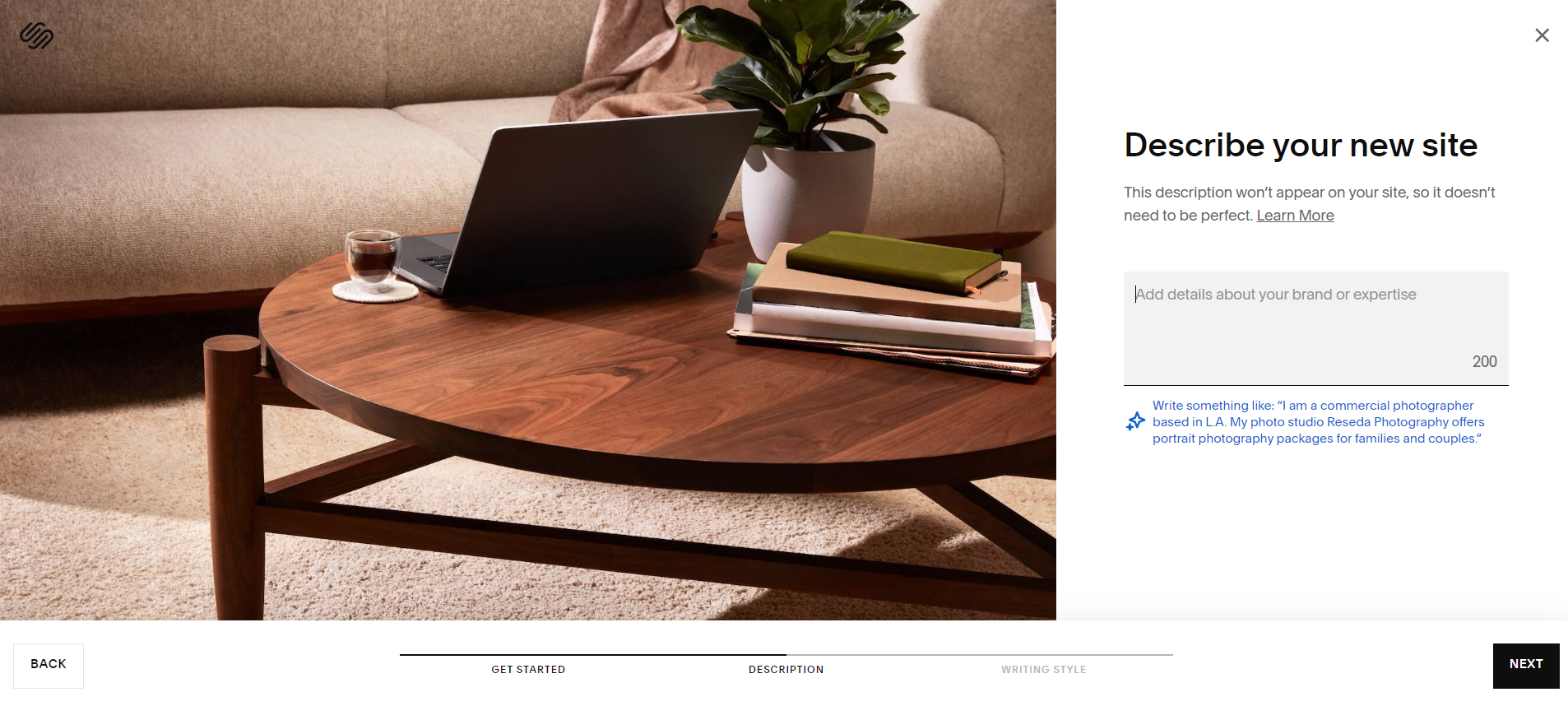
Showit, on the other hand, does not have any AI capabilities. This lack of AI features may limit the efficiency and effectiveness of website creation and management on the platform.
User Management
User ManagementAssesses the platforms’ capabilities in managing user roles, permissions, and accessibility.Score Components:
- Role Customization (40%): Flexibility in creating and defining user roles and
permissions. - Ease of Management (30%): User interface and tools for managing users.
- Access Control (20%): Effectiveness of access control measures for different user
levels. - Scalability (10%): Ability to manage a growing number of users efficiently.
 7.4
7.4
 6.7
6.7
🏆 Winner: Squarespace
. Both Squarespace and Showit offer different user roles and access levels, but Squarespace provides more flexibility and control.
- Squarespace allows varying numbers of users depending on the plan. The Personal Plan allows one owner, Business and Commerce Plans permit 2 collaborators with different access levels, and the Enterprise Plan offers unlimited users, each with customizable access privileges.
- Showit allows only one user on lower plans, but on its Showit + Advanced Blog plan, the platform allows an unlimited number of users with different access levels.
Squarespace User Roles and Access Levels:
| Role | Description | Access Highlights |
|---|---|---|
| Owner | The primary user who created the website and has full access. | Full site access, including billing, site settings, content editing, and member management. |
| Administrator | Users granted nearly full access to manage the site alongside the Owner. | Access to most areas except for some owner-specific settings like ownership transfer. |
| Content Editor | Users focused on adding and managing site content without full site access. | Can add, edit, and delete content on pages, blog posts, and manage comments. |
| Billing | Users who manage the subscription and billing details. | Access to billing information and the ability to update subscription details. |
| Store Manager | Users who manage the ecommerce aspects of the site. | Can manage inventory, fulfill orders, manage customers, and view sales analytics. |
| Custom | A role defined by the site owner or administrators with specific access. | Customizable access as defined by the Owner or Administrators, can vary widely between sites. |
Showit User Roles and Access Levels:
| Role | Description | Access Highlights |
|---|---|---|
| Administrator | Users with full access to all administration features, including Elementor settings. | Can edit all content, Access to Elementor settings, Can install plugins and themes, Can manage users |
| Editor | Users who can manage and publish content including pages and posts. | Can edit pages/posts created with Elementor, Cannot access Elementor settings, Can manage categories, tags, and links, Can moderate comments |
| Author | Users who can publish and manage their own posts. | Can create posts with Elementor, Cannot edit pages, Limited access to media library, Cannot access Elementor settings |
| Contributor | Users who can write and manage their own posts but cannot publish them. | Can create content with Elementor, Cannot publish or edit pages, No access to Elementor settings, Submissions require review by higher-level roles |
Additional Features

|

|
|
|---|---|---|
|
SSL Certificate |
|
|
|
Custom Domain |
|
|
|
Free Custom Domain Included |
|
|
|
International Domains |
|
|
|
Mobile Responsive |
|
|
|
Page Speed |
|
|
|
Website Builder Mobile App |
|
|
|
Convert a Website To An App |
|
|
|
Website Analytics |
|
|
|
Multilingual Sites |
|
|
|
Multiple Users |
|
|
User Feedback
Squarespace is well-liked for its easy-to-use interface and versatile tools, making it ideal for those who aren’t tech-savvy. It offers various features like website creation, SEO, online selling, and more, catering to different users. Customers appreciate its good customer support and visually appealing templates, creating a professional online presence. However, some users find issues with domain transfer/setup, limited customization options, and consider the pricing slightly higher. There are also occasional concerns about customer service and technical limitations like template rigidity and missing features.
Showit, while not available on G2 for reviews, is designed primarily for creative professionals such as photographers, designers, and bloggers. Its drag-and-drop interface and dual canvas feature for independent mobile and desktop design are highly praised. The seamless integration with WordPress for blogging makes it a popular choice for users who want design flexibility combined with powerful blogging capabilities. This unique approach to website building provides a high degree of customization and control over the website’s appearance on different devices.
The making of this blog
We followed a clear, step-by-step process to write and research this article.
FAQ
Which platform is better for ecommerce, Squarespace or Showit?
Can I use Showit for a blog?
Is Squarespace easy to use for beginners?
How do Squarespace and Showit compare in terms of design flexibility?
Which platform offers better customer support, Squarespace or Showit?
Are Squarespace and Showit mobile-responsive?
Which platform is more affordable, Squarespace or Showit?
Can I integrate third-party applications with Squarespace and Showit?
Which platform is better for SEO, Squarespace or Showit?
How do hosting and website speed optimization compare between Squarespace and Showit?










